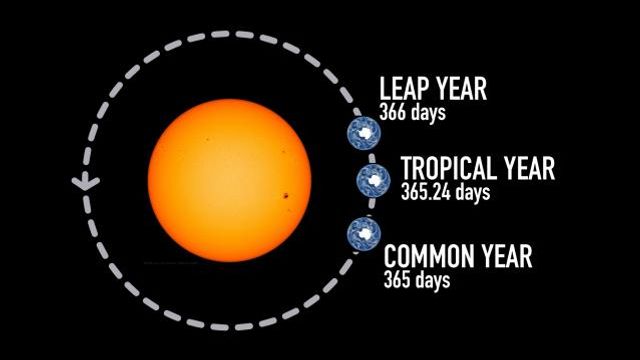Keeping Time in Sync: An In-Depth Look at Leap Years...!!!
leap years are a crucial element of our calendar system, designed to synchronize it with the Earth's orbit around the Sun. The leap year rule, refined over centuries, ensures our calendar remains accurate and in harmony with astronomical events.

Introduction
The concept of a leap year is a captivating feature of our calendar system, designed to keep our year aligned with the Earth's orbit around the Sun. A leap year includes an extra day, February 29th, to ensure our calendar remains accurate with the astronomical year, the time it takes for the Earth to complete one full orbit around the Sun.
The Need for Leap Years
Understanding the necessity of leap years starts with recognizing that a standard calendar year has 365 days. However, the Earth actually takes approximately 365.24 days to complete its orbit around the Sun. Although this discrepancy of about 0.24 days may seem minor, it can cause a significant misalignment between our calendar and the Earth's position over time.
Without adjustments, this small difference would accumulate, causing our calendar to drift by roughly one day every four years. Over a century, this would result in a shift of about 24 days, altering the timing of seasons. To correct this, the leap year system was introduced.
The Leap Year Rule
The leap year rule is simple: any year divisible by 4 is a leap year. However, there are exceptions. If a year is evenly divisible by 100, it is not a leap year unless it is also divisible by 400. This rule ensures our calendar stays in better alignment with the astronomical year.
For example:
-
The year 2000 was a leap year because it is divisible by 400.
-
The year 1900 was not a leap year because, although divisible by 100, it is not divisible by 400.
-
The year 2024 will be a leap year because it is divisible by 4 but not by 100.

Historical Background
The leap year concept originated in ancient Rome. The Julian calendar, introduced by Julius Caesar in 46 BCE, was the first to implement leap years, adding an extra day every four years. However, this system led to an overcompensation over time.
To address this, Pope Gregory XIII introduced the Gregorian calendar in 1582. The Gregorian calendar refined the leap year rule by adding the 100 and 400 exceptions, providing greater accuracy over the long term.
Significance of February 29th
February 29th, also known as Leap Day, is the extra day added during a leap year. This day has cultural significance and is often linked to unique traditions and folklore. For example, in some cultures, it is a day for women to propose marriage to men, a tradition dating back to 5th century Ireland.
People born on February 29th are called "leaplings" or "leapers." Since this date occurs only every four years, leaplings usually celebrate their birthdays on either February 28th or March 1st during non-leap years.
Leap Seconds
In addition to leap years, there is the concept of a leap second. Leap seconds are added to Coordinated Universal Time (UTC) to account for irregularities in the Earth's rotation. Unlike leap years, leap seconds are not added regularly but are determined by the International Earth Rotation and Reference Systems Service (IERS) based on astronomical observations.

Impact on Society
Leap years affect various aspects of society, including finance, technology, and legal systems. For instance, the addition of a leap day can influence interest calculations, software programming, and contractual agreements. Businesses and institutions must account for this extra day to maintain accuracy in their operations.
In conclusion, leap years are a crucial element of our calendar system, designed to synchronize it with the Earth's orbit around the Sun. The leap year rule, refined over centuries, ensures our calendar remains accurate and in harmony with astronomical events. Whether it's the cultural traditions linked to February 29th or the scientific precision of leap seconds, leap years play a vital role in our understanding of time and its measurement
What's Your Reaction?

















